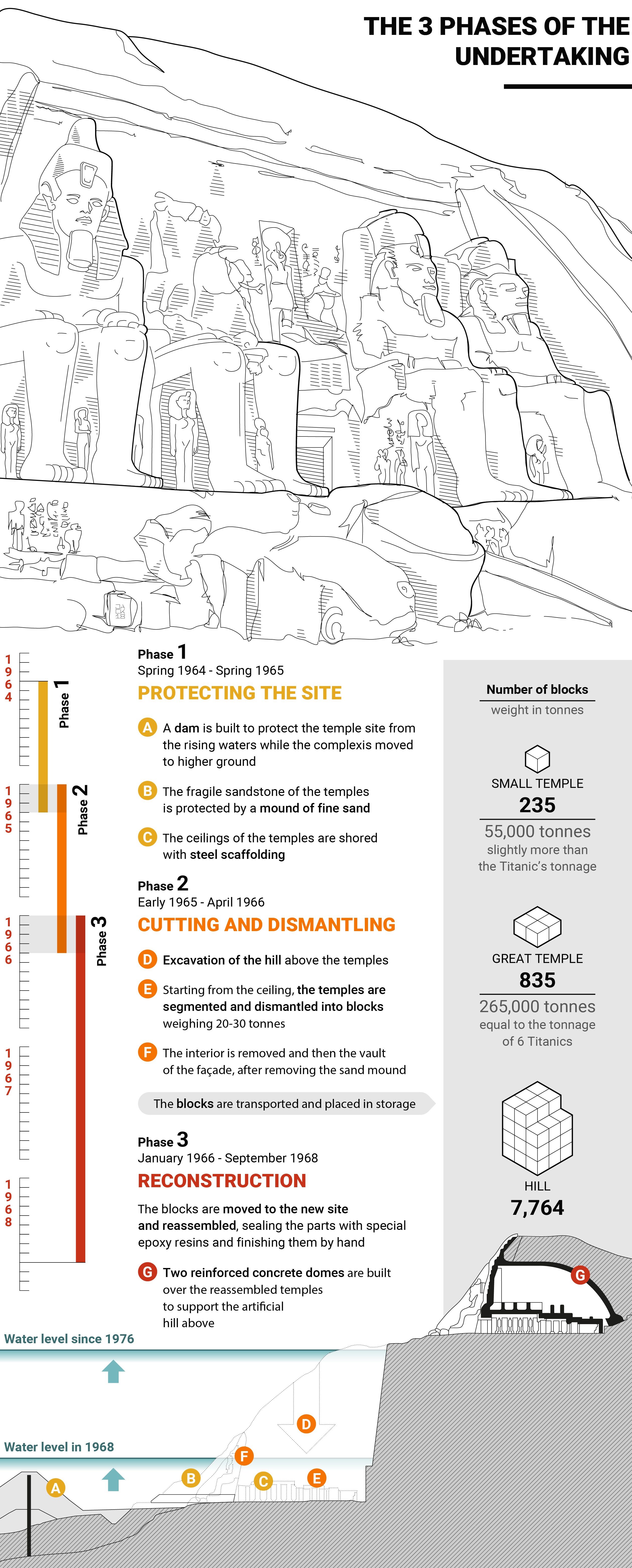One of the most daring engineering feats in history took place 50 years ago when the massive Ramesses II temples at Abu Simbel in Egypt were moved to safety. It was a race against time set off by UNESCO to protect these priceless monuments from being submerged by the rising waters of the Nile River after the construction of the Aswan Dam.
A half a century has passed since this extraordinary rescue, and Salini Impregilo (which took part in the effort along with other leading international builders) celebrated the anniversary on February 4 at the Museo Egizio (Egyptian Museum) in Turin at an event attended by Salini Impregilo Chief Executive Pietro Salini, the museum’s director, Christian Greco, and UNESCO Regional Director Ana Luiza Thompson-Flores.
To mark the occasion, the new multimedia tome "Nubiana" (published by Rizzoli) was presented with previously unpublished images and eyewitness accounts of the rescue, one of the most significant examples of international cooperation to defend a world heritage site.
In just over three years, the two temples, weighing 265,000 and 55,000 tonnes, respectively, were moved 280 metres inland and 65 metres higher than their original site, a safe distance from the risk of being submerged by the rising waters of the Nile.
UNESCO launched its appeal on January 9, 1960, three months after the construction of the Aswan High Dam began. Some of the world's most important construction companies responded immediately to the call. After a period of study and planning, the project was awarded in 1963 to a consortium of companies of which Salini Impregilo was part. The complex work on saving this priceless world heritage site started a few months later. Here is how it happened.
The first phase
Between the spring of 1964 and the spring of 1965, a 370-metre-long and 25-metre-tall barrier was built to protect the area from the rising waters. This huge wall that served as a first embankment was made from 380,000 cubic metres of rock and sand, and 11,000 square metres of steel sheets.
Next to the dam, to contain the impact of the river, a drainage system of wells and underground canals was also built.
The second phase
Once the site was secured, the dismantling of the temples began. The work started at the beginning of 1965 and ended in April 1966. It began with the removal of the roof while the temples' façades were protected with sand cushions to prevent them from being damaged by falling fragments.
After that, the temples were cut into blocks by marble cutters, some from the Carrara marble quarries of Italy. The temples were then dismantled and the blocks placed in a large storage area measuring 44,000 square meters awaiting their reassembly on higher ground.
The third phase
In January 1966 the reassembly work began, lasting more than two years until September 1968. The most delicate task fell to the surveyors, who were charged with verifying the perfect positioning of the blocks. Once the reassembly was completed, the surrounding area was recreated to perfectly reproduce the original site, so that visitors from around the world could experience the Abu Simbel temples exactly as they were designed.


